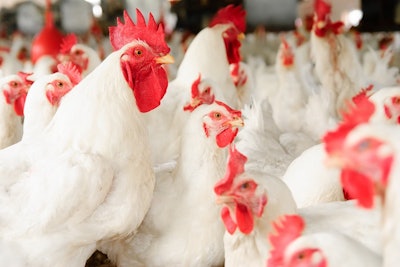
Innovative approaches to management and emerging technologies monitoring and collecting data on poultry welfare, activity and health could help the industry solve new challenges and keep poultry at the center of the plate.
Chicken is one of the most consumed proteins worldwide due to its great taste, versatility as well as continuous improvements in bird health, welfare and performance metrics by the industry.
However, in recent years, consumer demand shifted to include preferences including sustainability initiatives like net zero and higher bird welfare programs including slow growth and no antibiotics ever (NAE) production.
Transparency
Although further removed from food production than ever, modern consumers are highly invested in learning and understanding how it works. They want to know how the poultry they eat is raised and processed and want to understand the values of the company behind their protein.
Despite this, too many details can easily overwhelm them, forcing poultry companies to strike a delicate balance.
“You have to figure out how you’re going to tell the story and make it digestible,” Dr. Bruce Stewart-Brown, senior vice president of technical services and innovation at Perdue Farms, said.

Perdue Farms invites curious consumers, advocates, journalists, students and others to visit operational poultry facilities and even offers viewing rooms providing a look directly inside the broiler house.
In addition, advances in activity monitoring technologies, like innovations in audio and video data collection, could help people better understand chicken production. These tools generate objective information about health, welfare and behavior easily transformed into visuals.
For example, RFID tags give the industry – and consumers – the opportunity to learn more about broiler activity and find out which birds are more likely to go outside and when, as well as how to optimize pasture utilization.
Another promising innovation is more accurate and automated poultry weight predictions improving live haul planning and streamlining operations throughout the entire supply chain. This is especially important given the move toward automation in poultry processing. Automation could solve processing’s labor shortages, but it requires uniform flock sizes to be truly effective.
“The thing we’ve recognized through the years is that we have to keep working on things that could improve or that consumers value in purchasing chicken,” Steward-Brown said. “So the innovation piece is trying to figure out what we’re going to talk about in the next five years.”
Welfare and enrichment
Renewed and refocused pressure from animal rights activists post-COVID resulted in increased scrutiny about poultry welfare and specifically enrichments.
The poultry industry must now confront issues such as measuring behavioral change and determining if a bird is happy or not.
Continuous improvements to poultry welfare metrics include research into the optimal amount of dark and light each day, the use of cameras and acoustic monitoring to measure bird activity and improved environmental controls to optimize temperature, humidity and other factors in the poultry house.
“We are defining welfare around what is best for the chicken, not what some activist group thinks it should be,” Dr. Dave Wicker, vice president of live operations at Fieldale Farms Corp., said.

This information helps the industry set key welfare indicators, including paw scores, wing damage, transportation livability and environmental impact parameters, which gives the poultry supply chain an objective method to communicate about poultry welfare.
Retaining value
Value remains important to consumers, especially as the cost of everything – from energy to animal feed and more – impacts poultry prices.
“The majority of consumers have not changed their buying habits, and, with recent inflation, consumers have moved to find more affordable sources of good quality proteins,” Dr. Carl Heeder, senior director of avian health and nutrition at Mountaire Farms, said.

Remote monitoring, precision farming and better internet connectivity in rural areas will help poultry producers better manage their systems and continue to provide value to consumers, Heeder said.
“Precision farming has come a long way in a number of agricultural commodities, although I believe the broiler industry has a long way to go with this. The key will be to focus on parameters that impact bird health and welfare. Many times, the impact of the birds is not taken into account,” he said.


















